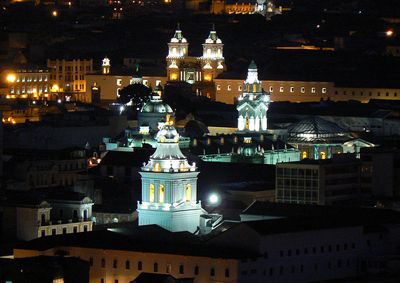by Carlos Suasnavas
Global Voices Online, August 9, 2009On August 9, 1809 a group of men in Quito, in what is now the Republic of Ecuador, participated in “Hispano-America's First Cry.” This act was a cry for independence from the rule for the Spanish King and was the first of many all across the region by those wanting the same independence. Even though Ecuador did not achieve full independence until 1822, the cry helped start the Ecuadorian War of Independence. This year, Ecuador is celebrating the Bicentennial in remembrance of the event that took place 200 years ago.
One of the men, who helped lead this movement was Eugenio Espejo, who used his influence to take this step for the future of Hispano-America, and whose dreams came true in the early hours of August 10, 1809. Belén Proaño of Temas Para Debatir [es] writes about Espejo's role in eventual independence:
Las ideas de Espejo, fueron el punto de partida de una nueva concepción de lo que hasta ese entonces se entendía por patria, afirma el historiador Jorge Núñez, autor del libro Eugenio Espejo y el pensamiento precursor de la independencia . “Se empieza a entender por patria a Quito, y ya no a España. Nace una toma de consciencia sobre lo que será después la nación ecuatoriana”.
On the night of August 9, there was a great amount of activity throughout the city of Quito, and many went to the “Resistance Room” owned by Doña Manuela Cañizares. The next morning, many of the most important people in Quito at the time, assembled and created the Government Sovereignty Board and elected its officers. Later on August 16, 1809 a General Assembly was convened and the first document of the Independence of Quito was signed.
After the first uprising, the city of Quito was given the nickname “Luz de América” or (America's Light) and served as an inspiration to other peoples striving for independence. Quito sowed the seed and the rest of the Americas followed suit. The blog Brigada Quetzalcoalt [es] also provides a review of this date in Bolivia, which is also celebrating a Bicentennial for their own Cry for Independence.
Following the Quito’s example, Caracas launched it Cry for Independence on April 18, 1810, Buenos Aires on May 25, Bogotá on July 20, Mexico on September 16th, and Santiago de Chile on May 18. The American continent was on fire, and had been sparked by the people of Quito.



Ecuador is one of the most beautiful countries in South America. The weather, the colonial cities and the people are just fantastic. Nothing compares to the landscapes of the Highlands, the lush of the Amazon Jungle Forest, the exotic Beaches of the Coast and the mystery of the Galapagos Islands.
ReplyDelete